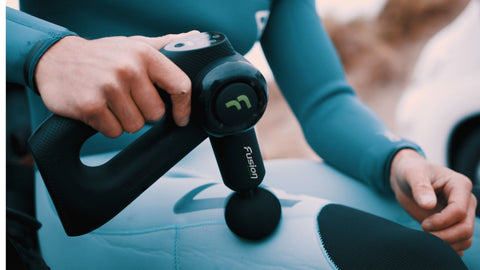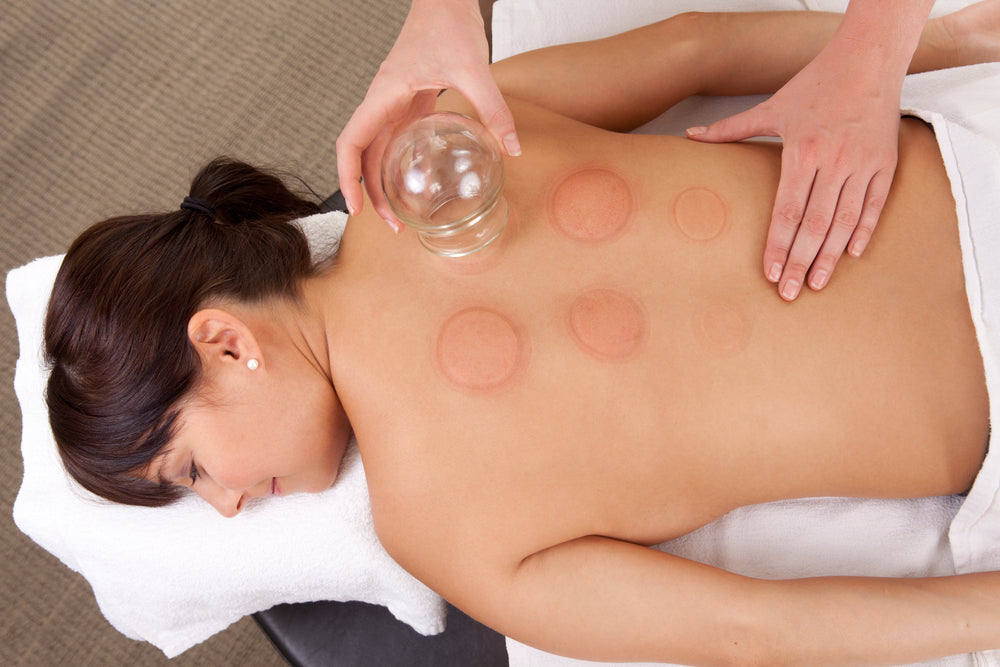If you are an athlete or someone who is into physical fitness, you’ve probably heard of the term ‘passive recovery’.
This mode of recovery is widely popular across the fitness industry for its ability to promote complete rest and healing. It's very simple and requires no active effort on the part of the person recovering.
But while passive recovery has become quite popular in recent years, many people don’t understand what it is or how it works.
Does it have to do with taking a break certain forms of exercise or something else? Or maybe it has to do with engaging in specific activities?
What does "passive" even mean?
To help quell your curiosity, Fusion is here to help.
In this article, we’re going to take a closer look at passive recovery and explain how it works. We will also provide you with some practical tips on how to incorporate it into your daily routine.
From the importance of sleep to the top passive recovery methods for faster muscle recovery, we’ll cover everything you need to know about passive recovery.
So, if you're ready to get the lowdown on passive recovery, let's get started!
Understanding Passive Recovery
At its most basic level, passive recovery is the practice of allowing your body to heal and recover without engaging in any strenuous exercise.
It is an important part of any fitness routine, as it helps promote recovery and reduce fatigue after intense workouts or activities.
The main goal of passive recovery is to restore your body to its pre-exercise state. This can be especially beneficial for athletes or people who are constantly pushing their bodies to the limit. It can take many forms and may include techniques such as yoga, stretching, massage, and even a nap.
Each of these methods has its own set of benefits and is designed to help the body heal faster while also reducing muscle soreness and inflammation.
Let's explore how they work and how you can use them to get the best results.
Types of Passive Recovery
Passive recovery is a broad term that can refer to a variety of techniques and methods. Here are some of the most common types of recovery:
Sleep
Sleep is one of the most important forms of passive recovery.
Not only is it essential for proper physical and mental recovery, but it also allows your body to rest and rejuvenate after an intense workout. While the exact amount of sleep you need varies from person to person, a good rule of thumb is to aim for 7-9 hours every night.
This will give your body and mind the rest they need to recover and be ready for the next day.
Massage therapy

Treating your body's muscles to massage is another form of passive recovery.
After all, what better way to relax and ease soreness than with a massage?
Massage therapy can help reduce muscle tension, improve flexibility, and even promote better blood flow.
It is also a great way to promote relaxation and reduce stress levels. And the best part? You don’t even have to leave your house! There are plenty of at-home massage tools you can use to get a great massage any time you want.
Popular examples include foam rollers, massage balls, and even massage guns. With these tools, you can easily target and treat specific areas of the body.
Hydration
Taking the time to hydrate is also essential for proper passive recovery.
While this may not seem like an obvious journey to recovery, it is one of the most important.
Not only does staying hydrated help your body flush out toxins and waste, but it also helps promote better blood flow and muscle health. Aim to drink at least 8 glasses of water throughout the day and increase your intake when engaging in intense workout sessions.
You can also opt for herbal teas, coconut water, and other hydrating beverages. They are a great way to promote better hydration and give your body the fluids it needs to stay healthy.
Meditation
If you’re looking for something to do that requires no physical effort, then meditation is the way to go.
Studies have found that this incredibly powerful tool can help reduce stress levels, improve sleep quality, boost immunity, and even increase focus and productivity. It’s also a wonderful way to recharge the human body and mind without having to engage in any physical activity.
All you need to do is find a quiet spot, close your eyes, and focus on your breath to get started. You can also use guided meditation apps or audio recordings if you’re not sure how to get started.
Stress level management
In a world where stress levels are at an all-time high, managing stress levels is another important part of passive recovery.
Stress can have a significant impact on your physical and mental health. It can make it more difficult to focus and complete tasks, cause fatigue and sleep problems, and increase the risk of developing chronic illnesses.
That’s why it is so important to prioritize stress management. This can involve anything from eating healthy to engaging in breathing techniques when feeling overwhelmed.
These are just a few of the many ways you can practice passive recovery and give your body the time it needs to heal.
Whether it is through sleep, massage, hydration, meditation, or stress management, making sure to take time for yourself will help you stay healthy and perform at your best.
Next, we'll explore just how you can incorporate these tactics into your daily life.
What To Expect From Passive Recovery
The benefits of passive recovery are wide and many.
Not only do they give your body the time it needs to rest and recover, but they also provide a great way to promote better overall health. Some of them include:
Faster muscle recovery
A primary benefit of passive recovery is that it helps promote recovery from muscle pain.
This is especially beneficial for those who engage in intense workouts. Taking the time to relax and unwind can help reduce major muscle soreness and inflammation, allowing your body to get back up and running much more quickly.
By providing your body with the time and space it needs to rest, you can help reduce inflammation and muscle soreness and promote better overall health.
Reduced injury risk
Imagine engaging in a strenuous physical activity without giving your body the time it needs to recover properly.
Not only will you be more likely to suffer an injury, but you’ll also increase your risk of developing chronic conditions such as tendonitis or plantar fasciitis.
This is why passive recovery is so important. By giving your body muscles the time needed for faster recovery, you can reduce your risk of injury and help promote better overall health. This will, in turn, allow you to stay active and healthy for a much longer time.
Improved mental health
Taking time to relax can also help improve your mental health.
When we are actively engaged in physical activity, our brains release endorphins which act as natural muscle painkillers and create a feeling of euphoria and happiness.
However, when we don’t give our bodies the time they need to rest, these levels drop significantly. This can lead to feelings of depression, irritability, anxiety, and even stress.
By taking the time to relax and unwind, you can help improve your mental well-being. This will not only help you feel better on a daily basis, but it can also promote better overall health in the long run.
Better blood flow
Another way passive recovery can benefit your health is by promoting better blood circulation.
Engaging in physical activity can cause our muscles to tense up, restricting the flow of blood. This can lead to fatigue and soreness.
However, when we take the time to relax, we allow our muscles to loosen up and promote better circulation throughout our body. This can help reduce fatigue and soreness while also promoting better overall health.
One form of passive recovery that's proven to be effective in promoting blood flow deep into the muscles is massage therapy. With self-massage tools like Fusion Elite, you can easily give your sore muscles the massage they need to relax and promote better blood flow.
Improved energy levels
Finally, passive recovery can help increase your energy levels.
Having the right energy levels is essential for performing at your peak and engaging in high-intensity exercises.
When we don’t give our bodies the time they need to rest, our energy levels can drop significantly, leaving us feeling exhausted and unmotivated. Forms of passive recovery such as yoga, meditation, and massage can help reduce stress and fatigue while also promoting better overall health.
This will, in turn, allow you to stay active for longer periods of time and perform at your peak during your workouts.
Now that you know the numerous benefits of passive recovery, it’s time to make it part of your daily routine. Whether you are looking to increase blood flow, eliminate injury risk, or improve your mental health, passive recovery can be an invaluable tool in helping you achieve your goals.
Next, we'll explore just how you can maximize the benefits of passive recovery for your health.
Simple Tips to Maximize Benefits of Passive Recovery
Engaging in passive recovery activities is a great way to promote better muscle recovery, reduce injury risk, and increase energy levels.
However, there are a few tips you can keep in mind to maximize the benefits of these activities. Some of them include:
Be consistent
Consistency is key when it comes to passive recovery.
Developing a routine and sticking to it can help ensure that you are getting the most out of your recovery activities. This could mean taking the time to relax and unwind after every workout or engaging in meditation, yoga, or massage therapy once a week.
Eat an overall balanced diet

Eating an overall balanced diet is another important part of passive recovery.
Consuming foods that are rich in vitamins and minerals can help your body heal and recover faster from physical activities. This includes eating plenty of fruits, vegetables, lean proteins, and complex carbohydrates.
Eating healthy can also help reduce fatigue and stress while promoting better mental well-being.
Avoid smoking
Smoking is one of the most damaging habits when it comes to your overall health.
Not only does it increase the risk of many serious diseases, such as lung cancer and heart disease, but it can also interfere with passive recovery activities.
The nicotine in cigarettes can cause your blood vessels to constrict, leading to poor circulation and an increased risk of injury. Smoking can also reduce your entire body’s ability to absorb essential vitamins and minerals, which are important for muscle recovery.
By avoiding smoking, you can help ensure that you are getting the most out of any passive recovery process you choose.
Stay away from alcohol
If you’re looking to maximize the benefits of passive recovery, it’s best to avoid drinking alcohol.
Alcohol is a depressant and interferes with your body’s ability to recover from intense physical activities. It can also cause dehydration, which can worsen muscle soreness and fatigue levels.
By avoiding alcohol, you can help ensure that your body is getting the rest it needs to perform at its best.
Avoid strenuous activities
Recall stress level management as a form of passive recovery?
Well, what better way to reduce stress than by avoiding strenuous activities?
Engaging in strenuous activities right after an intense workout can often add to the stress levels and make the situation worse. Instead, it is recommended that you take some time off and practice passive recovery activities such as mindfulness and deep breathing exercises to help relax your body and mind.
These activities will help reduce stress hormones like cortisol in the body and can even improve cognitive performance.
Take time to unwind for better sleep quality
Taking time to unwind before bed is essential for better sleep quality.
Stress and anxiety can interfere with the quality of our sleep, leading to fatigue and decreased athletic performance. That’s why it’s important to take the time to relax and destress before you hit the sheets.
A few ways to unwind before bed include taking a hot bath or shower, listening to calming music, reading a book, meditating, or practicing yoga.
These activities can help reduce stress and anxiety while promoting better sleep quality. This will allow your body to get the rest it needs for maximum performance during physical activities.
By following these tips and engaging in passive recovery activities regularly, you can help ensure that your body is getting the rest and recovery period it needs to perform at its best.
Frequently Asked Questions
Now that we’ve gone over the basics of passive recovery and some tips to maximize its benefits, let’s dive into some common questions on the topic.
Is passive recovery suitable for everyone?
Yes, passive recovery activities can be beneficial for just about anyone.
People who stand to benefit the most from passive recovery activities are those who engage in intense training plans, such as athletes or bodybuilders. However, it can also be beneficial for people with a light exercise regime or those who do not necessarily engage in high-level physical activities.
If you’re unsure if passive recovery is right for you, it’s best to speak with your doctor or a qualified health professional.
How often should I implement passive recovery in my workout routine?
Incorporating passive recovery into your workout routine totally depends on which high- or light-weight training activities you are engaging in and how often.
For example, getting enough sleep is essential for any level of physical activity. Generally speaking, adults should aim to get 7-9 hours of sleep every night for optimal performance.
On the other hand, meditation and massage therapy can be done a few times a week, depending on your schedule. Staying hydrated should also be incorporated into your daily routine, while stress management techniques should be used as needed.
Other factors that affect how often you should use passive recovery include your lifestyle, goals, and individual needs.
Are there any risks associated with passive recovery?
Yes, there are some risks associated with passive recovery.
While it is generally considered a safe practice, there are still some potential side effects that should be noted.
For example, overdoing passive recovery activities like massage therapy can lead to fatigue and decreased energy levels. This may lead to decreased performance during training sessions and increased overuse injuries.
That's why it’s important to practice passive recovery in moderation and be aware of your body’s physical limitations.
Do I have to incorporate all forms of passive recovery for maximum benefits?
No, you don't have to implement all forms of passive recovery for maximum benefits.
It's important to find the combination of training plans that works best for you and your lifestyle. Everyone is different, and certain passive recovery activities may be better suited for some than others.
For instance, if you are short on time or would like to focus more on mental health, then meditation and stress management techniques may be more beneficial for you than massage therapy. However, if you are an athlete who engages in intense physical activities, then other forms of passive recovery like massage might best suit your needs.
By taking the time to experiment and find the right combination, you can maximize the effects of passive recovery and ensure your body is getting all the rest and recovery it needs.
Can passive recovery be used in combination with other recovery methods?
Absolutely! Combining passive recovery activities with other forms of recovery, such as active recovery or stretching, can be a great way to maximize your physical performance and reduce the risk of injury.
For example, you could take part in a yoga class after a long run to help stretch out your muscles and promote better sleep quality. Or you could incorporate foam rolling into your post-workout routine for improved circulation and range of motion.
The key is to find the right combination of activities that work best for your individual needs and goals. With some trial and error, you’ll be able to find the perfect balance of active and passive recovery activities.
Conclusion
Passive recovery is a great way to treat your body and mind after an intense workout.
By taking the time to get adequate sleep, hydrate, do massage therapy, meditate, and manage stress levels, you can give your body weight the passive rest it needs to properly recover and prepare for the next day.
When practiced in moderation and combined with healthy habits, passive recovery can help promote faster muscle recovery and better blood circulation. It can also help to improve energy levels, promote better sleep quality, reduce injury risk, and improve mental health.
Simple steps you can take to maximize the benefits of passive recovery include staying true to a consistent recovery schedule, eating healthy, avoiding alcohol and cigarettes, and taking time to unwind for better sleep quality.
Now that you know the basics of passive recovery, make sure to start incorporating these activities into your routine for better overall health and wellbeing. We are here to help you reach your personal wellness goals if you have any questions or need more advice.





